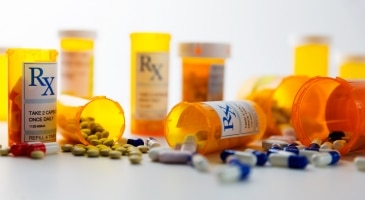While major retailers like Walgreens and CVS make picking up prescriptions as simple as replying to an email or walking up to the counter, the pharmaceutical supply chain is not quite as simple. Some might think the process is as easy as loading a truck and driving from point A to point B but there are many precautions and protocols to consider when shipping high-risk pharmaceuticals.
Cool Under Pressure
One of the most fundamental aspects of the pharmaceutical supply chain is constant temperature regulation and maintenance. Many immunizations and vaccines are perishable and must be transported, handled and stored in a temperature-regulated environment to avoid damage. Overexposure to heat, sunlight or humidity will cause drugs to lose their potency and medical benefits, resulting in dire and even fatal consequences. If vaccines are exposed to temperatures outside the range of +2 °C to +8 °C for a certain period of time, it can lead to wastage, causing the damaged vaccines to be discarded. Even worse, the spoiled vaccines may be administered, leading recipients to be more susceptible to disease (Vaccine Storage and Handling). Any disruption in the cold chain could be fatal, especially in underdeveloped countries, and result in lack of protection against preventable diseases, increased reactions and limited access to possible lifesaving intervention.
Stolen Goods
In addition to temperature management, the high frequency of cargo theft is another major concern in the pharmaceutical industry. According to the U.S. Cargo Theft report, pharmaceutical thefts increased by 50% in 2013 (SIW). Pharmaceutical distribution centers and trucks carrying high risk shipments are among the two largest targets for theft. Pharmaceutical theft not only results in a significant loss of money, it also damages the company’s reputation and leads to prescription recalls. Furthermore, pharmaceuticals obtained through cargo theft pose many health risks to patients who purchase them unlawfully online without prescriptions. In some cases, the stolen drugs are for clinical trials and may not be approved yet by the FDA (Safe Meds).
Real or Fake?
Often times, unapproved drugs from other countries infiltrate the US supply chain through middlemen or secondary wholesalers. Counterfeit drugs pose many health risks to patients as they are not produced under safe manufacturing conditions and are not inspected by regulatory authorities. It is impossible for consumers to know what they are ingesting. To combat cargo theft and counterfeit drugs entering supply chains, many regulations and precautions have been implemented. For instance, companies often use two drivers for high-risk shipments, plant GPS tracking devices in cargo and utilize new locking devices not even accessible to drivers. The FDA has also implemented many regulations to document the flow of drugs through the supply chain. One requirement all pharmaceuticals must adhere to is the usage of track and trace to increase supply chain visibility of the drugs at all times.
Solution: Use a 3PL
The majority of the pharmaceutical market share is split between a small number of very large companies. Whether you are one of those giants or a smaller player in the market – the best way to navigate the incredibly tricky pharmaceutical supply chain is to employ the help of a third party logistics company. 3PLs offer many solutions for pharmaceutical shipping needs, such as real-time GPS tracking and electronic data interchange to provide shipment visibility. 3PLs also have the ability to source carriers who work with high-risk pharmaceuticals, further securing the supply chain.

